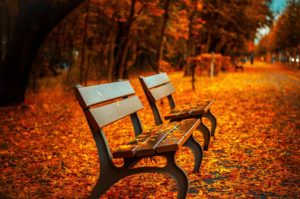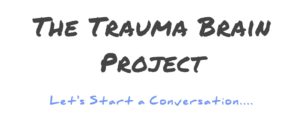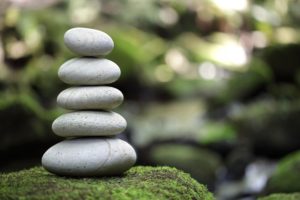Happy New Year!
I love this time of year. It feels so fresh with possibilities. But that’s an illusion, though, right? Every moment of every day is fresh with possibilities. Yet maybe it’s the collective agreement about the specialness of the New Year that provides an extra wave of optimism that we can use to feed our own New Year resolutions. I’ve also noticed a growing wave of cynicism this year. There seems to be an expectation that no matter what your resolution is, it won’t take long for it to fade away. Again, that may be a collective tendency, but why assume that will be the case for you? We don’t have to be victims of the collective influence.
When we choose to do something different with ourselves, we almost always move away from a comfort zone and toward something we have to learn to be comfortable with. New possibilities can trigger the fears that live below the surface of our minds. Years ago I was talking with my husband about an issue I had been struggling with for a long time. “Why can’t I just let this go?” I wondered. He offered (and I accepted!) the possibility that it was because I had held on to this way of thinking for so long and it had become a part of me. He suggested that it was because I didn’t know who I would be without it that I chose to hold on.
Sometimes we hold on to the most uncomfortable aspects of ourselves because they are familiar. We are afraid of who we might be without them – afraid of the unknown and unfamiliar. Fear is a powerful motivator – you only have to look around at the political and economic climate to see evidence of that. Fear sells a lot of products, garners a lot of votes and keeps the status quo in place. Even the prophecy around 2012 is feeding into that collective fear which affects us all and yet goes largely unacknowledged. Fear can also warn us of impending danger, or be an indicator that we’re growing out of our comfort zone – it’s all about how we choose to see it.

I believe that we each are integral parts of the collective that is humanity. Goswami Kriyananda writes that we are each “microcosms of the macrocosm.” From this perspective, when one of us makes a change to our way of thinking or being in the world, it creates a ripple that affects the whole collective.
So what if we were to create ripples or even waves of change this year by acknowledging and stepping out of the vortex of the collective fear of gloom & doom through the recognition of our individual fears? I don’t mean “fighting” or “pushing through” or “ignoring” your fear. Just being willing to see it with compassion is itself a revolutionary act of courage.
Sometimes just seeing clearly is all it takes to recognize anticipation of the new versus an actual threat to well-being. Imagine if, as a collective, humanity could recognize change as a marvelous potentiality versus impending doom & destruction. In a comment to a post about Fear as Opportunity that I wrote in 2010, a reader named Christine offered a wonderful mantra she uses when faced with fear: “I am willing to dance with you.” I think that just about sums it up.
So how do we cultivate this capacity to view ourselves compassionately? I offer below a version of the Buddhist Metta meditation that has helped me to cultivate self-compassion. It has helped me in the process of acknowledging, and in many cases moving beyond, the many fears that held me hostage for years.
Have I overcome all my fears? Heck no! I don’t even know if I will, and that’s actually okay with me. What I do know is that seeing a little more clearly and a little more compassionately helps me to be curious, rather than contemptuous about myself and this mysterious, fascinating, sometimes-seriously-hard-to-deal-with adventure we call Life.
So here are the 4 phrases that I use for my Metta practice:
May I be filled with loving-kindness,
May I be peaceful and at ease,
May I be free from suffering and self-deception,
May I be healthy and happy, and free from fear.
The traditional phrases are: May I be safe, May I be happy, May I be healthy, May I live with ease. (I know, a lot
less words!) For more information on Metta, Sharon Salzberg, a well-known Buddhist teacher, talks about the
traditional practice in which you also offer these phrases for others. Personally, I like to do “drive-by Metta” silently for strangers I pass on the street, for the patients in passing ambulances and even for politicians & acerbic TV talk-show hosts! It provides me a small way to transform a wave of apprehension, anxiety or fear into an act of possibility.
Namaste, and may 2012 bring you peace, curiosity, compassionate self-awareness and ease of well-being!!
 In a conversation with my mother-in-law this evening we laughed about how sometimes it feels like you can't even safely go into the backyard (for those who have a backyard). It's like the mind subconsciously views the entire "outside" as potentially dangerous.
In a conversation with my mother-in-law this evening we laughed about how sometimes it feels like you can't even safely go into the backyard (for those who have a backyard). It's like the mind subconsciously views the entire "outside" as potentially dangerous. I recently had the honor of being on a panel of body-centered therapists following the reading of a play by Dayle Ann Hunt titled The Trauma Brain Project.
I recently had the honor of being on a panel of body-centered therapists following the reading of a play by Dayle Ann Hunt titled The Trauma Brain Project.

 How are you feeling now? You can repeat that sequence one more time if you’re feeling a little more focused or settled than you were before you started.
How are you feeling now? You can repeat that sequence one more time if you’re feeling a little more focused or settled than you were before you started.
